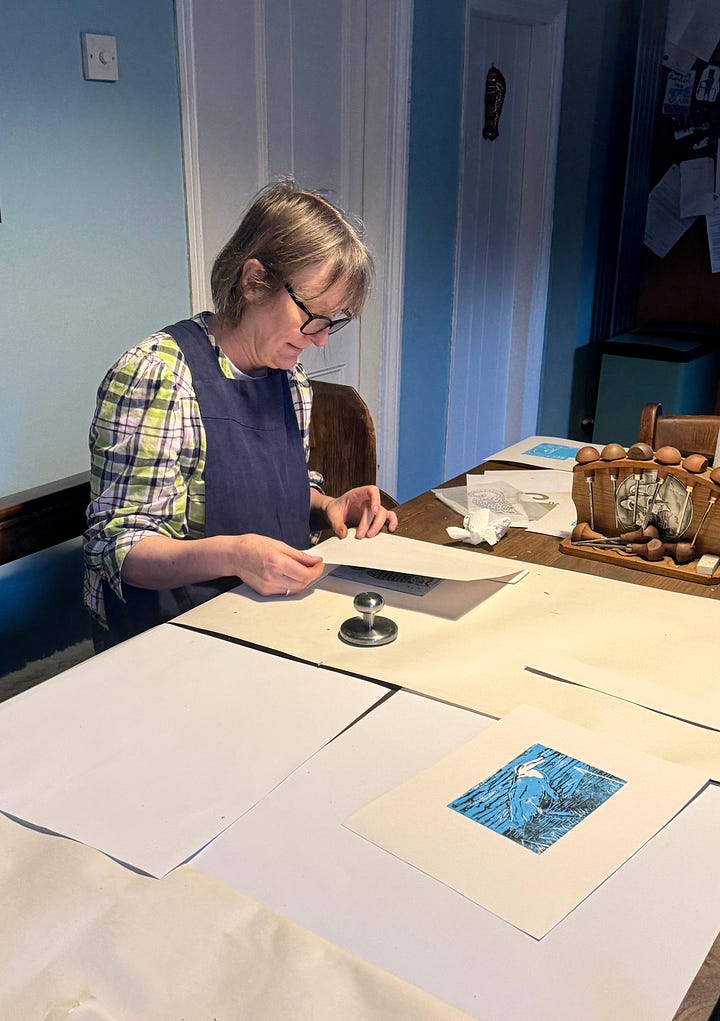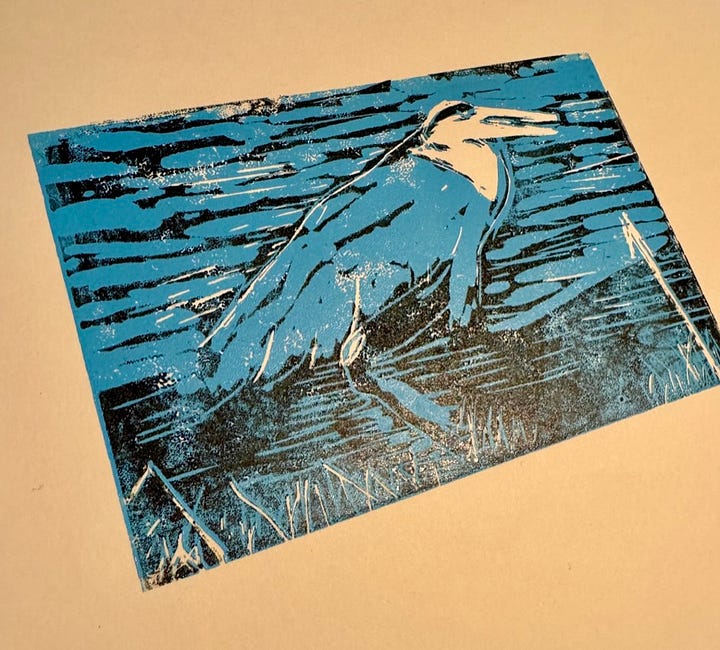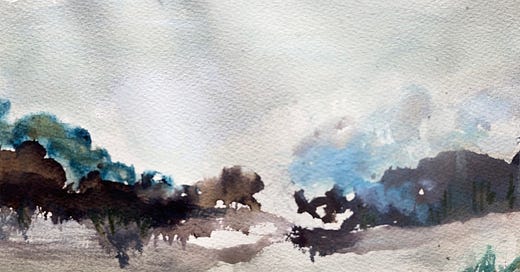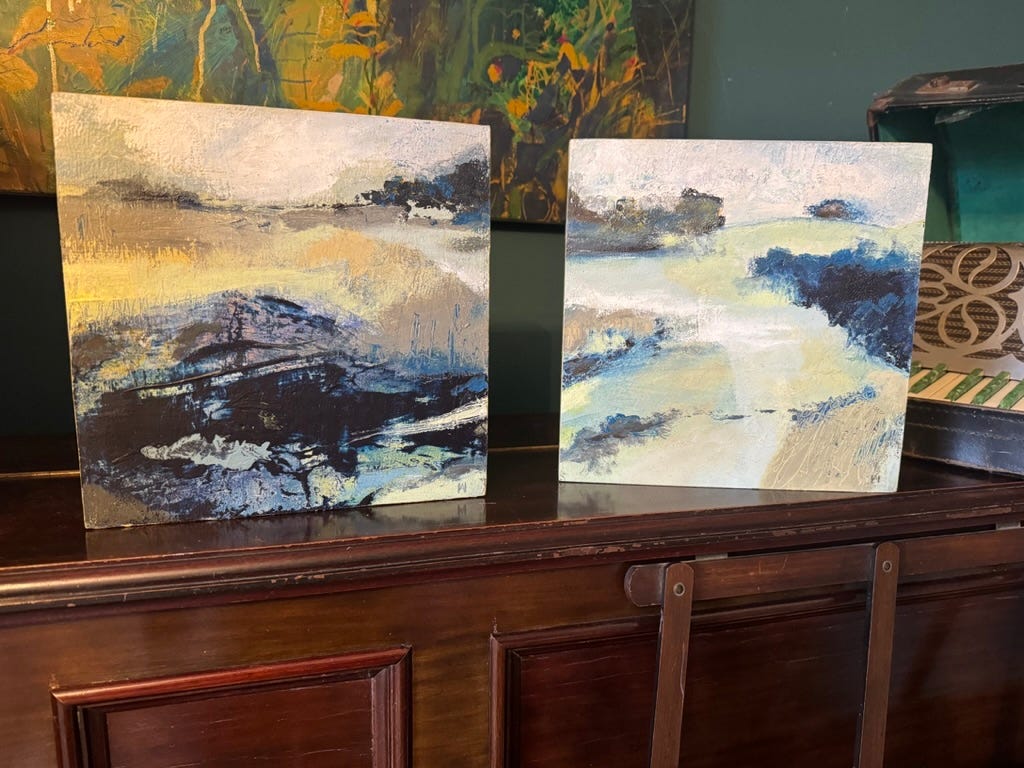The unseen in our art
I have proclaimed here that art-making is all about really looking. Ah well, now I'm going to make you consider my theory of how the "unseen" contributes to creativity.
In my most recent demo on taking new directions, I mentioned wanting to share with you the concept of “unseen landscapes”.
This phrase leapt out at me in a passage of Robert Macfarlane’s book, “Wild Places” (2017). He writes about Paul Nash and his response to landscape. Nash believed that wild places are all around us but not readily perceived so sometimes “invisible”. This got me thinking.
On reflection, I have further interpreted the phrase and perhaps am about to misrepresent Nash, but here goes... Unseen landscapes are created in our imaginations as a combination of external prompts and internal emotional response. To my mind, there’s this further element that makes interaction with our worlds, whether that’s the landscape of our living areas, streets, or remote mountains (eg, any scale), a uniquely personal vision.
As an aside, I heard the actor Cillian Murphy talk about the landscape of the face and I thought that was really insightful. Our emotions shift over the face a little like weather changes over the hills here where I live.
A certain energy
Ultimately emotion and the imagination feed into these “unseen landscapes” and when we apply creativity in our lives we want to tap into that. We’re effectively giving visibility to the unseen when we make art. A paradox perhaps?
Art that’s filled with this energy of the unseen really draws people in.
My theory (or Paul’s?!) also explains how you can guide a group of students through a painting, step by step, and ask them to reproduce the work. Of course each piece will vary, sometimes to a great extent, and that’s because of the unseen landscape of their imagination and feeling as well as their ability to learn a technique.
Learning styles
It’s a privilege to be a teacher of art-making and creativity. You might be dealing with people at their most vulnerable or most joyous.
Some are able to remain open to learning and your teaching approach, and some feel defensive and closed. That could be for any number of reasons and in any combination. This is what you have to stay alert to as you teach; it requires you to be agile and responsive.
I had the experience of teaching two very different workshops within 5 days of each other last week. In a 1:1 session, gifted by a partner, my student gave the impression of being a bit put out at having to come along (through stories of previous failed gifts from their partner).
Creative process wasn’t an issue for this person at all – at home, they were really tuned in to having fun, getting messy, and working on a big scale. But they’d had little instruction in around 17 years and had become quite fixed in their ways. One small example, they painted in acrylic straight from the tube, with no exploration of colour mixing and all the wonderful subtleties that come with that.
Wobbly
Hands-on messy painting surprisingly made this session really awkward because my instructions were too open-ended, as it turned out. (And perhaps wobbly confidence was an issue, often the cause of defensiveness?)
Because they’d described their happy painting sessions, I hadn’t wanted to be heavy handed in my teaching and suggested only play and making texture without building to a representative outcome: this led to a type of instability for me and my student. So I decided we should stop using paint and instead discuss how I’d made this diptych below that they’d picked out to enjoy. Step by step!
It was challenging to open up areas of exploration in this session, but we did some colour mixing, discussed favourite artists and I shared my more unusual ways to manipulate paint.
I had new insight into how learning styles are unique and embedded in our sense of self as well as our internal confidence (not our “presented” confidence, I mean).
The second session was so different. A group of three came to one of my linocut printmaking workshops – on the kitchen table at my home, naturally. I was teaching them a specific technique that involved tools and “kit” and actual process stages. When skill-gathering drives your learning there are less areas of discomfort, of course; you’re picking up something structured, not challenging your aesthetic or ways of seeing.




What do you want to feel when you create?
For about three years I stuck to linocut printmaking as my main creative outlet. I realise now that this was because it felt safe to pick up lots of techniques and give myself the gift of process which I could finesse and bed down.
Actually, what was missing was my “unseen landscape”, that energy peculiar to me that’s all about how I interpret the world and ultimately how I feel. (Not that I don’t love linocutting and I developed confidence through it, but I sensed there was a lot more to my art and I was quite afraid to tap into that.)
Lockdown made me reflect: I found myself wondering what was missing. There was an urgency to access the personal – to try painting for a change but also to create from deeper inside. Get a bit of that “unseen-ness” into my work.
That is now the road to travel… for me at least. I feel like it’s early-ish days in a big adventure without obvious end. And that’s exciting and liberating (most of the time!)
The unseen and the not knowing keeps us open but also allows our instincts to come to the fore. This is what I want to encourage in you. Stay open to all possibilities in your creativity.
Finally…
This is the last post for February as I shift into a new creative space here.
Paid subscribers – you may want to cancel your subscription now that I’m taking a break from making video demos. Here’s the instructions on how to cancel from the friendly team at Substack.






